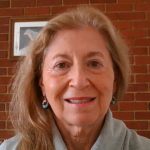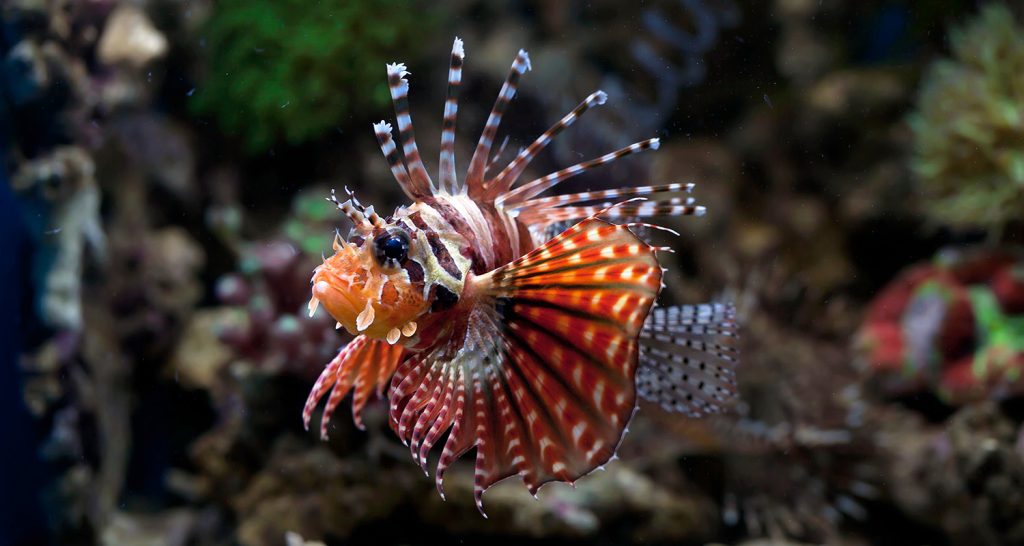The staff and board of the North American Invasive Species Management Association review invasive species headlines each month. This helps us stay on top of trends and further our mission to support, promote, and empower invasive species prevention and management in North America. We then share invasive species news most relevant for people who manage terrestrial and aquatic invasive species across the the United States, Canada, Mexico and the world.
Prevention, Outreach and Education
Spotted Lanternfly a “Shocking” Expense to Homeowners.
Pennsylvania – Read on CBS News
A quick read about the potential expense of Spotted Lanternfly infestations for homeowners. And instructions on how to easily catch spotted lanternfly in a bottle.
Invasive Plants are Stealing Water from our Forests
Texas — Read on The Woodlands Township
Although billions of dollars are being spent to battle invasives in the U.S., the report also predicted rapidly increasing negative effects in the future such as loss of soil health as these water thieves drain up to 250% more moisture than our native vegetation.

New Research
Team Discovers Invasive-Native Crayfish Hybrids in Missouri
Missouri — Read on University of Illinois News Bureau
In a study of crayfish in the Current River in southeastern Missouri, researchers discovered – almost by chance – that the virile crayfish, Faxonius virilis, was interbreeding with a native crayfish, potentially altering the native’s genetics, life history and ecology.
The discovery should come as a warning to those using environmental DNA to look for an invasive species in an area with closely related native species, said Larson, whose laboratory specializes in the use of eDNA.
eDNA Detection of Native and Invasive Crayfish Species Allows for Year-Round Monitoring and Large-Scale Screening of Lotic Systems
Global— Read in Frontiers in Environmental Science
Complementary to traditional survey methods, eDNA sampling has recently emerged as a highly sensitive non-invasive detection method to monitor crayfish populations.
Invaders for Sale: the Ongoing Spread of Invasive Species by the Plant Trade Industry
United States — Read in Frontiers in Ecology and the Environment
The widespread availability of invasive plants in the U.S. is likely a symptom of disjointed state regulations that fail to protect ecosystems and economies. Regional regulation coupled with outreach to growers and consumers is needed to reduce the ongoing propagation of invasive plants in the U.S.

Modeling Risk for Sudden Oak Death Nationwide: What are the Effects of Model Choice on Risk Prediction?
North America — Read on ResearchGate
Tree-Killing Pests Across the United States Are Increasing the Threats of Climate Change
United States — Read on Nature
First-of-its-kind study finds forest insects and diseases are leading to nearly 50 million more tons of carbon dioxide in the atmosphere each year.
Promoting Adaptation and Resilience to Invasive Species and Climate Change
Global – Read on Environmental Conservation Educational Materials
Clear management goals and an understanding of the range of disturbances affecting focal ecosystems are necessary for deciding between managing for resistance, resilience, or transformation and what actions are required for successful management outcomes.
Detection, Management and Control
Invasive Wild Pigs in National Park for First Time at Alberta’s Elk Island
Alberta — Read on MSN/The Canadian Press
One of the most destructive and rapidly spreading invasive species on the continent has been found for the first time in a Canadian national park.
Read about transboundary cooperation — including the Squeal on Pigs! campaign — discussed at last month’s annual conference.
Giant Snails That Were Eating Florida Homes Finally Eradicated … Again
Florida — Read on Live Science
The effort cost $24 million and required 10 years of work, The Miami Herald reported.
This Man Documented 5,000 Trees Being Killed By Vines In Takoma Park

Policy
Final Report: Costs Associated with Invasive Mussels Impacts and Management
United States — Read on Bureau of Reclamation
This study provides evidence that mussels management strategies provide considerable value to the nation.
Garamendi, Amodei Introduce Bipartisan Bill to Stop the Spread of Aquatic Invasive Species
Washington, D.C. — Read on John Garamendi press page
NAISMA has taken a position to support this bipartisan legislation that would authorize federal land management agencies to take proven, commonsense measures to prevent the proliferation of invasive species in our nation’s waterways, lakes, reservoirs, and aqueducts.
The Unsung Success of Injurious Wildlife Listing Under the Lacey Act
United States — Read on Management of Biological Invasions
Previous papers discussing the effectiveness of injurious wildlife listings under 18 U.S.C. 42(a) of the Lacey Act have emphasized failures while ignoring the many successes. We looked at the 120-year history of injurious listing and then determined the effectiveness of the listings since the U.S. Fish and Wildlife Service (USFWS) gained the listing authority in 1940.
see below for upcoming NAISMA webinar featuring one of the author’s of this paper:

- This event has passed.
Webinar: Injurious Wildlife Listing under the “Lacey Act”
January 19, 2022 @ 1:00 pm – 2:00 pm CST
History and Effectiveness of Injurious Wildlife Listing under the “Lacey Act”
Presented by: Susan Jewell, Injurious Wildlife Listing Coordinator, U.S. Fish and Wildlife Service

As part of the original federal law known as the “Lacey Act” passed in 1900, injurious wildlife has been amended several times, but the purpose has always been to protect the United States from the introduction of invasive and otherwise harmful wildlife. Congress first gave the authority for overseeing injurious wildlife to the U.S. Department of Agriculture and later to the Department of the Interior. Injurious listing prohibits the importation of wild vertebrates, crustaceans, and mollusks that can cause harm to wildlife resources, humans, and other U.S. interests. However, most people know about a different provision of the “Lacey Act,” which is about trafficking of wildlife and plants. This presentation will explain what the “Lacey Act” is and the difference between the injurious and trafficking provisions. It will emphasize how the service focuses on adding high-risk species to the federal injurious list before they become established and how effective that has been in preventing the establishment of those injurious animals.
Susan Jewell

Susan (Su) Jewell is the Injurious Wildlife Listing Coordinator for the Department of the Interior’s U.S. Fish and Wildlife Service, based in the headquarters in northern Virginia. In her capacity, she coordinates the regulatory listing of harmful wildlife species as injurious, which prohibits their importation. She is an authority on the history of injurious of injurious wildlife listing and recently published a summary of the history since 1900 and her evaluation of how effective injurious listing is. Prior to her 11 years working with invasive wildlife, she spent 11 years with the Service’s Endangered Species program, 12 years in the Everglades studying Everglades health, alligators, wading birds, and fisheries. Su holds a B.S. in Wildlife Biology from the University of Vermont and a M.S. in Systematics and Evolutionary Biology from the University of Connecticut.
There are continuing education credits available for purchase for this webinar from Certified Crop Advisers, International Society of Arboriculture, Society of American Foresters, Society of Ecological Restoration, and The Wildlife Society.
Details
- Date:
- January 19, 2022
- Time:
-
1:00 pm – 2:00 pm CST
- Event Categories:
- Government Relations, NAISMA Webinar, Programs, Webinars
- Event Tags:
- injurious wildlife, Lacey Act, U.S. Department of Agriculture
- Website:
- https://us02web.zoom.us/webinar/register/WN_CWioD48QTUKCGxz1rZxryw
Related Events
-
Webinar: The Trouble with Lionfish: Perspectives from across North America
May 15, 2024 @ 1:00 pm – 3:00 pm CDT -
Webinar: Live Long and Prosper: Protecting Ash Trees and the Ash Resource from Emerald Ash Borer (EAB)
June 19, 2024 @ 1:00 pm – 2:00 pm CDT
Conversations
Where have Gainesville’s Native Green Anoles Gone?
Florida — Read on The Gainesville Sun
Invasive Species Increasingly Threaten Protected Areas Worldwide
Global — Read on Duke Nicholas School of the Environment
A new international study suggests that invasive species, such as the cordgrass that is swamping native plants in the Red Marshes, pose a much greater threat to protected areas, even well managed ones, than was previously recognized.





